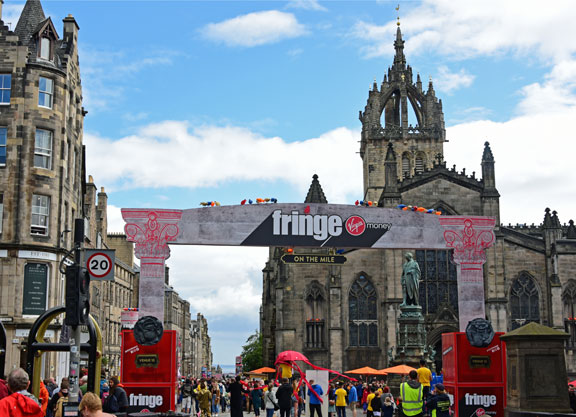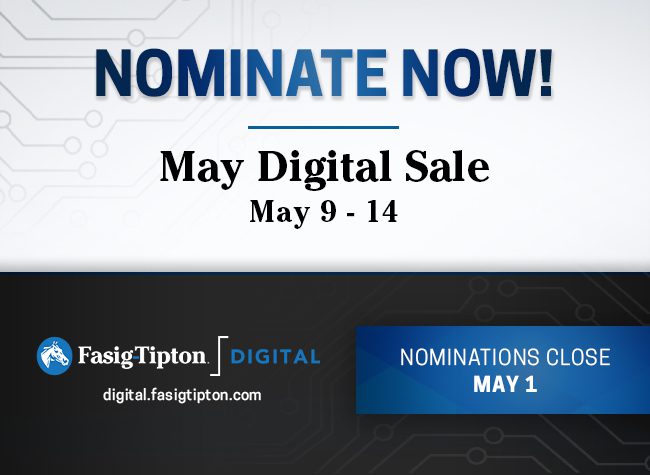By Jack Cantillon
If racing was given a time machine for some inspirational travel, where should we go? After a pit stop to buy Northern Dancer from E.P. Taylor for his reserve of $25,000 at the 1962 yearling sales, I'd suggest an unlikely destination–Edinburgh, 1947.
The flux capacitor would transport us to meet eight uninvited theatre companies who decided to defy organisers of the newly created Edinburgh International Festival and turn up anyway. Not being part of the official programme of the International Festival didn't stop these intrepid entrepreneurs; they just went ahead and staged their shows on the fringe of the Festival anyway. The idea spread, a space for artistic expression, unshackled from the constraints of an actual invitation and criteria compliant act. Today, the Edinburgh Festival Fringe, a festival still on the fringe of another festival, is the largest arts festival in the world with last month 56,796 performances over 27 days in 317 venues. Those eight chancers created an event that is now second only to the Olympic Games in terms of attendees. The Edinburgh Fringe is a lesson in bringing those in the margins into the tent and opening art to the masses.
That's why racing needs our own fringe movement. It's where trainers' new potential owners linger undiscovered. It's where racecourses' big new sponsors lurk with their sponsorship unspent. Simply, the fringes are where we've got to go to grow our sport on any metric.
Ahead of Irish Champions Weekend, we should be proud of the impact of our own festivals, from the Melbourne Spring Carnival to Royal Ascot and Saratoga. A recurring theme in our most successful events is their ability to embed themselves in the wider community and capture the imagination of the public usually on the fringes of our own sport. When you think about those events it's not racing authorities that create the experience. It's the picnics at Royal Ascot. It's the syndicate buying one and dreaming of Flemington. It's the family basing themselves in the fun of Saratoga for their summer vacation. Too often people in racing look to the powers-that-be, asking what they can do to help them, awaiting that invitation from the higher power to do something. When they do step forward, those attempted fringe events that are created to enliven the action can seem like a broken record. What is the point of a bigger best-dressed prize or race card draw to reward those who perhaps haven't watched a single race? I don't want to be part of a sport that is scared of celebrating the sport itself. When a nation is stopped each November, Australia does not wait with bated breath for the result of the most fascinating fascinator. Racing, if it wants to become embedded in the mind of the wider public, needs to start, always, with racing itself.
Embedding racing into our wider communities doesn't begin and end at the racecourse. As we compete with other demands on time, we need to look at ways of doing what we do differently and grow interest in racing exponentially. In 2010, a meet-up for 400 or so of the local technology community was convened in a lecture hall in Dublin. The organisers then had a brainwave about how to redefine a conference experience, and set about in their words “engineering serendipity.” Instead of the usual endless talks, they created speed networking using data to match those who would get most out of meeting each other; they held custom digital pub crawls and offered data-based applications which gave attendees the power to get exactly what they wanted from the experience. Eight years later, Web Summit is the world's largest tech conference, attracting 70,000 of the most powerful power brokers in tech to their new home in Lisbon. That kind of vision of a different way of doing things is what racing needs.
Where should we start to capture those on the fringe? With enough ambition, racing can be the perfect backdrop for pioneering globally minded events. The world's biggest collection of global leaders, the World Economic Forum in Davos, was founded by 444 executives coming together for a week of skiing. We need to consider what more we can do to make racing a platform for business communities to come together over the perfect icebreaker, like skiing, of a racing festival and engineer our own serendipity through the magic of our own sport. Society as a whole is pivoting towards an activity- based spend of their disposable dollar away from the purchase of goods. We need to deliver a better digital experience that allows racegoers to embrace the local community whether it's by letting you know that the Sydney Arms is the place to go after Royal Ascot or Le Drakkar after Deauville. We need to capture these newcomers thoughts for our trainers and empower them with data points of what newcomers want from the ownership experience and where they can be found. We need our authorities to understand that by celebrating the horse, our most passionate fans, no longer alienated by the most fascinating fascinator, will become our secret weapon as that is what they love about the sport too. We need to think how racing can become part of the educational experience for local schools in teaching them about their country's relationship with the land and the horse. We have to scrutinize how we can implant racing in the city centre be it through street performances, digital displays or when a big event emerges to compete with us like the World Cup, we collaborate with that event, not capitulate. We need to look beyond the usual and embrace the unusual.
Seventy-one years on, the Edinburgh Fringe still thrives as it understands that with the right tools, if they build it the people will come and in doing so open their art to everyone. We need to understand our success doesn't come from more numbers through the gates, money in the pools or foals being produced. I believe success for racing is rooted, like the fringe bringing us closer to art, in opening the wider public to closer contact with the animal we love. That's why aftercare to deepen the impact the horse, our greatest ambassadors, can have in society is so important. That's why explaining the sport and making it accessible is so important. That's why we have to relentlessly explore what we haven't considered before and turn our own festivals into the greatest opportunities they can be for our industry. It is, and always should be, about the horse. Racing's greatest vulnerability is being an inward-looking sport home to only those in our own echo chamber. Don't wait for that invitation–you'll do better without it. Let's be fearless and head to the fringes.
Not a subscriber? Click here to sign up for the daily PDF or alerts.






